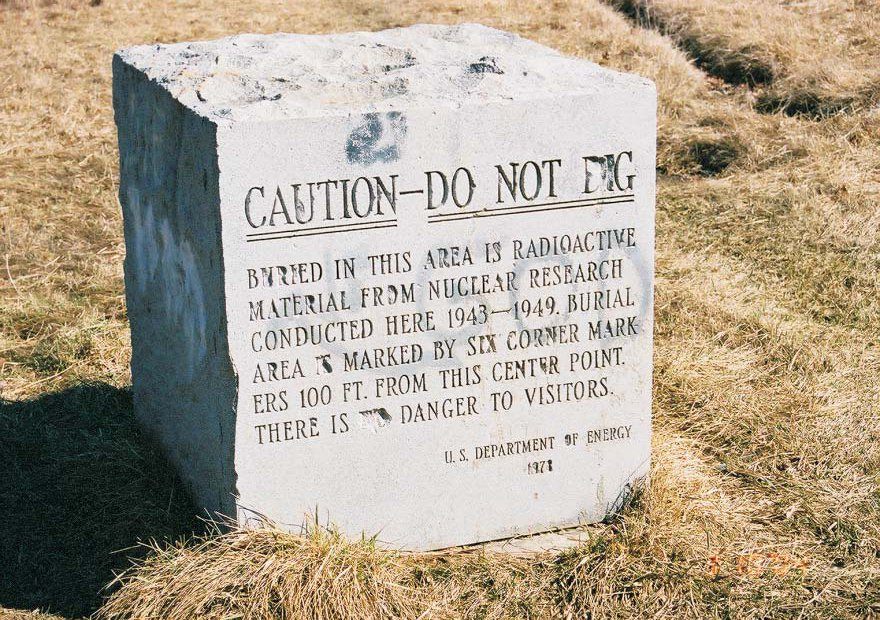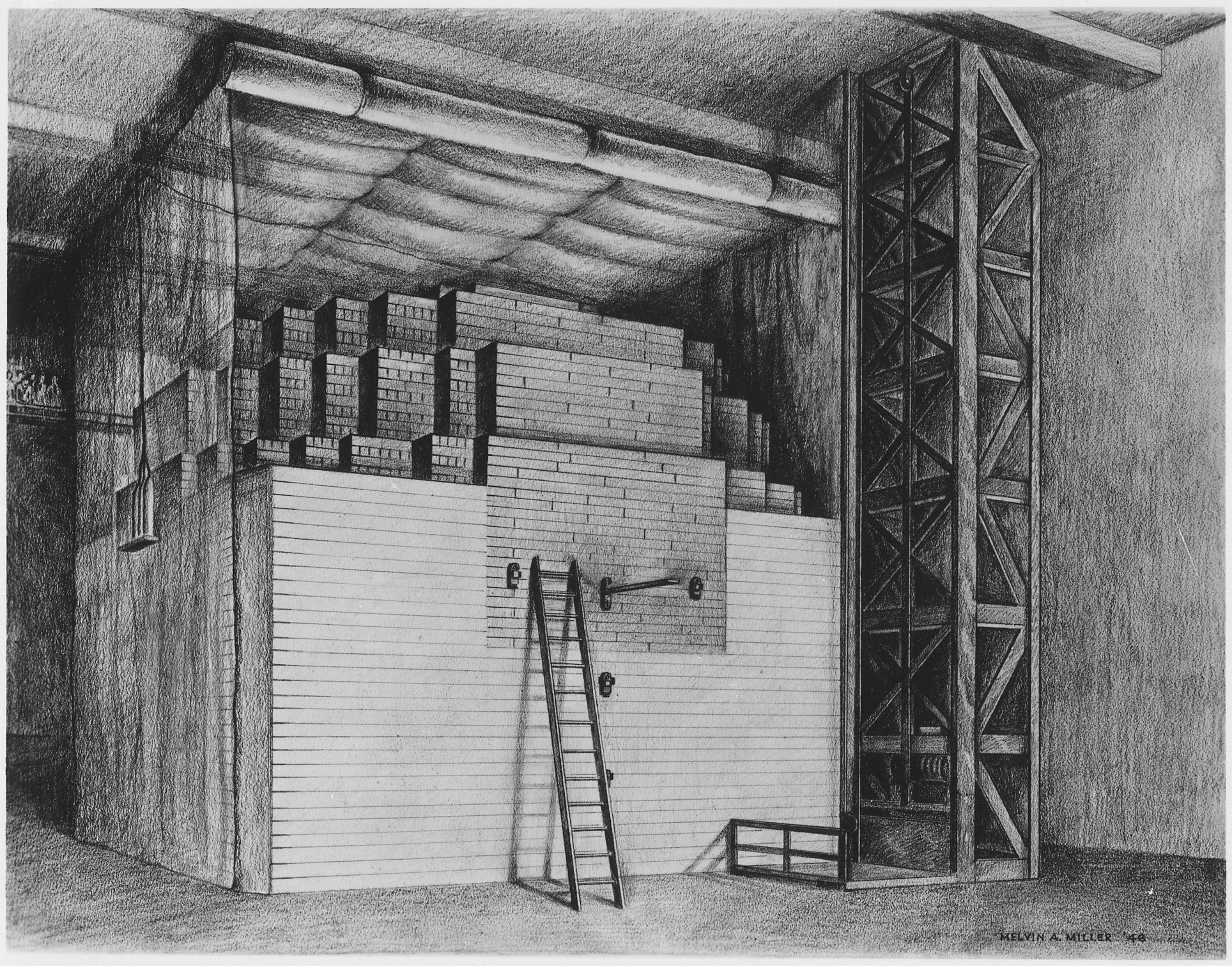Object of Intrigue: A Nuclear Reactor’s Tombstone
 (Photo: Federal Government of the United States/Public domain)
(Photo: Federal Government of the United States/Public domain)
This story was sponsored by the fine folks of Enjoy Illinois.
Standing on a grassy clearing in Red Gate Woods just outside Chicago is a gravestone with a most unusual inscription: “CAUTION—DO NOT DIG.”
The grave marker pays tribute not to a person, but a project: nuclear research. Buried beneath the stone is radioactive waste from Chicago Pile-1, the world’s first artificial nuclear reactor. (Why “artificial”? The title of “world’s first nuclear reactor” was claimed in Oklo, Gabon circa two billion years ago, when uranium-rich mineral deposits became flooded with groundwater, setting off a natural self-sustaining nuclear chain reaction.)
Nicknamed CP-1, the reactor was an experiment, built in 1942 as part of the Manhattan Project, the United States’ initiative to develop an atomic bomb during World War II. The reactor was a literal pile: in a squash court beneath the stands of Stagg Field, the University of Chicago’s disused football field, Italian physicist Enrico Fermi and his team of scientists built a stack of uranium pellets and bricks of graphite, interspersed with cadmium control rods. Fermi believed that with this humble-looking pile, he could produce the world’s first artificially initiated, controlled, self-sustaining nuclear chain reaction.
 A drawing of CP-1. (Image: Melvin A. Miller of the Argonne National Laboratory/Public domain)
A drawing of CP-1. (Image: Melvin A. Miller of the Argonne National Laboratory/Public domain)
WBEZ explains the finer workings of the 20-foot-tall pile:
Basically, it was just a stage to let the uranium do its thing: emit neutrons that would occasionally strike the nuclei of other uranium atoms, thus splitting off even more neutrons. The graphite served as a moderator, which would slow down the neutrons and make them more likely to strike additional uranium nuclei. … The element cadmium naturally absorbs neutrons, so when the rods were in place, the nuclear reaction would almost stop. To get the reaction going, scientists could pull the rods out of the pile and let stray neutrons buzz freely, striking more and more uranium nuclei. The team was aiming for criticality, the point at which, if you removed the cadmium rods and let the pile go, the chain reaction would continue exponentially on its own.
Fortunately—or unfortunately, depending on your perspective—Fermi’s instincts proved correct. On December 2, the control rods were removed and the reactor went critical, paving the way for the development of nuclear power. Unable to boast of their success on the top-secret project, the 49 observing scientists celebrated among themselves with paper cups of Chianti.
Following this initial testing, CP-1 was disassembled in 1943, moved to Red Gate Woods, and rebuilt, with a radiation shield for safety, as a new reactor named CP-2. Another experimental reactor, CP-3, followed in 1944. When the Manhattan Project scientists were done with these reactors, they dismantled them and buried the remains in the woods, at spots marked Plot M and Site A. Both are now marked by granite monuments—Plot M has the headstone marked DO NOT DIG.
Though the buried waste is radioactive, the site poses no threat to public safety. When WBEZ visited with a geiger counter, the readings in the area were consistent with standard background radiation levels.
 The marker at Site A. (Photo: Federal Government of the United States/Public domain)
The marker at Site A. (Photo: Federal Government of the United States/Public domain)




Follow us on Twitter to get the latest on the world's hidden wonders.
Like us on Facebook to get the latest on the world's hidden wonders.
Follow us on Twitter Like us on Facebook